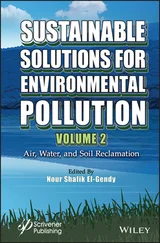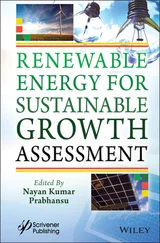
Figure 3.1 Schematic representation of the adhesion of bio surfactant molecules to the containment in which bacterial cell is associated (Guerra‐Santos et al., 1984).
They have many benefits over chemical‐derived surfactants, including minimal toxicity, biologically available, biologically degradable, high foaming, and environmentally safe [4, 5]. Therefore, they are safer substitutes for synthetic surfactants, notably in food, medicine, cosmetics, and edible oils [6, 7]. Biosurfactants have an extensive range of applications in different domains such as cosmetics, pharmaceuticals, milk, energy, irrigation, forestry, textiles, painting, and several other sectors. These molecules are commonly known as multifunctional compounds, like stabilizers, wetting agents, antimicrobials, moisturizers, emulsifiers, and antiadhesives [8–11].
3.2 Significance of the Production of Biosurfactants from Industrial Products
The major barrier in the production of biosurfactants is the cost of the production process. It was documented that the main obstacle to large‐scale application of biosurfactants is related to their higher production cost (10–30%) than chemical surfactants. In particular, carbon and energy sources used during the fermentation process cost 50% of the total costs of production of biosurfactants [12–14]. However, the use of alternative nutrient sources that are readily available and cheap may drastically reduce this cost [15]. The usage of industrial waste or byproducts as a source of energy for biosurfactant production may be an effective way to reduce production cost and sustainability of the production process for industries. It was reported earlier [16] that agro‐industrial waste, with a higher protein, fat, and carbohydrate component, is desirable as a production medium component for biosurfactant production.
Similarly, industrial byproducts, i.e. glycerol, petroleum sludge, sugar cane bagasse, and fish waste, could be used as a carbon source for the fermentation process and microbial growth [17]. Several microorganisms, like Bacillus , Corynebacterium , Pseudomonas , and Rhodococcus are capable of producing biosurfactants from various industrial byproducts. Aguiar et al. [18] reported the use of Corynebacterium aquaticum as emulsifying biosurfactant producers by using agro‐waste. Waste discharged from oil‐based industries is severely harmful to the environment and is assumed to be primarily responsible for worldwide pollution. Many of them are neurotoxic, carcinogenic, and poisonous and, therefore, can impact human and animal health [19–21]. Similarly, the solvents used for the removal of paint adversely affect the environment. Searching for new techniques that effectively reduce pollutants is therefore extremely important in order to reduce the adverse impact of industrial wastes.
3.3 Factors Affect Biosurfactant Production in Bioreactor
Various factors influence the biosurfactant production efficiency of microbes. These factors are divided into various categories, but primarily belong to three major groups:
1 The first group of factors includes medium components, i.e. carbon, nitrogen source.
2 The second group includes physicochemical parameters of the microbial community and growth conditions in the bioreactor, i.e. upstream processing [22, 23].
3 The third group includes the product isolation parameters, i.e. downstream processing.
The components of all of these groups have a direct impact on production cost and product quality.
Different groups of microorganisms, i.e. bacteria, fungi, and yeasts, are known as potential sources for the production of biosurfactants. Their production potential relies on various environmental and physiological conditions. Each microbe does have optimal conditions for its growth. However, the optimum growth conditions for cells are not always very suitable for the production of the desired product [14, 24]. The quantity of biosurfactants produced depends primarily on the type of microorganism and nutrient type. Most of the microorganisms that have a biosurfactant production capability have been screened from various industrial waste sites, i.e. contaminated soils, effluents, and wastewater discharge points [25]. Therefore, these organisms can grow on industrial byproducts and could be utilized for biosurfactant production under controlled conditions by using industrial waste as a carbon source. It was earlier reported that the nature, quantity, and quality of the carbon substrates and other media components (i.e. nitrogen, phosphorus, magnesium, iron, and manganese) mostly determine the type of microbial biosurfactant [16,26–28]. Similarly, microbial growth parameters, i.e. pH, temperature, agitation, and dilution rate, also influence the nature of biosurfactant produced in fermentation [29].
Bacteria plays an essential role in the biosynthesis of biosurfactants on the industrial scale. Pseudomonas has been reported to be the leading genus, followed by others for biosurfactant production [30]. Pseudomonas nautica, isolated from a Mediterranean coastal area, was reported to produce extracellular biosurfactants with excellent emulsifying behavior [31]. Based on the various kinds of carbon as well as hydrocarbons, microorganisms can yield different types of emulsifiers [32]. A group of researchers [33] proved this practically by providing various hydrocarbons as a carbon source to hydrocarbon‐degrading Pseudomonas fluorescens for the biosynthesis of trehalose lipid‐o‐dialkyl monoglycerides‐protein emulsifier [34].
Bacillus sp. are mostly recognized for the biosynthesis of lipopeptides (lipid connected to a peptide) [35], lichenysin (anionic cyclic lipoheptapeptide biosurfactant), surfactin (bacterial cyclic lipopeptide) [36], lipid–protein complex [37] and subtilisin (a protein‐digesting enzyme) [38]. In 1983, Jenneman et al. [39] documented the application of thermotolerant and halotolerant Bacillus licheniformis JF2 in microbial‐enhanced oil recovery. Similarly, Bacillus brevis and Bacillus polymyxa were documented to produce a large number of cyclic lipopeptides by using agro wastes [40]. Horowitz and Griffin [41] reported that biosurfactant BL‐86, which has been produced by B. licheniformis , is useful for various applications and is capable of remediating heavy metal contaminated soil. BL‐86 is capable of reducing surface tension and emulsification of hydrocarbons.
There have already been 160 biosurfactants producing bacterial strains identified in soils contaminated with petroleum [12, 42, 43]. Abouseoud et al. [44] reported the potential of P. fluorescens Migula 1895‐DSMZ for biosurfactant production from olive oil. In their study, it was concluded that P. fluorescens Migula 1895‐DSMZ is the primary organism responsible for the production of biosurfactants from various industrial wastes.
Acinetobacter sp. are readily available in nature and are among the most frequently available marine microbes in ocean habitats [45]. Due to their separate existence, Acinetobacter sp. have received significant attention from many scientists in the last few years. Hydrocarbon degrading Acinetobacter sp. perform a significant role in the bioremediation processes of various hydrocarbons in the natural environment [46]. Choi et al. [47] isolated Acinetobacter calcoaceticus RAG‐1, which produces a commercially important biosurfactant called “emulsan,” from the Mediterranean Sea, by using oil industry waste.
Читать дальше













